Social infrastructure has always helped communities overcome oppression, and today it is helping to build resilience in communities on the frontlines of the climate crisis. While restoration of federal support is the goal, the strength of existing social infrastructure systems is a reason not to lose hope.
about the writer
Mimi Sheller
Mimi Sheller, Ph.D., is Dean of The Global School at Worcester Polytechnic Institute, in Massachusetts. Sheller is an interdisciplinary social scientist with work in Caribbean Studies, Mobilities Research, and Social Theory. Sheller was founding co-editor of the journal Mobilities, and past President of the International Association for the History of Transport, Traffic and Mobility.
As the Trump Administration attempts to dismantle many of the federal agencies that are tasked with keeping our communities safe from floods, droughts, wildfires, and other climate hazards, it may seem easy to fall into despair. However, as applied researchers, we have dedicated years to studying adaptation options in the urban Northeast and the Caribbean, respectively. Through this work, we have learned that robust social infrastructure is one of the most important foundations for resiliency. Given the investments in social infrastructure that have already been made, surprisingly, we write this piece with hope.
What is social infrastructure? The Intergovernmental Panel on Climate Change (Dodman et al 2022) defines it as a community’s “social, cultural and financial activities and institutions as well as associated property, buildings and artefacts”. Social infrastructure underpins resiliency since effective climate action requires the involvement of government, businesses, local authorities, and individuals (Hampton and Whitmarsh 2023). Resilience strategies emerge when community members deliberate intensively with one another, and when the deep technical understanding of climate hazards and physical infrastructure design housed in the scientific community is blended with intimate local knowledge about community needs and aspirations. This purposeful integration and sharing of different kinds of knowledge builds the adaptive capacity of our complex multilayered communities in ways that are crucial now, as formal federal support for climate resilience dries up.
While continued federal support would, of course, be ideal, there is a lot that communities can do both on their own, and through mutually reinforcing partnerships with local applied researchers. In fact, we largely know what the technical solutions will likely entail: circular economies that drastically reduce greenhouse gas emissions and waste, blue-green infrastructure systems that enhance ecosystem services, and multifunctional spatial planning that enable the “15-minute city” along with equitable public transportation systems. What can sometimes be missing, however, is the political will to support implementation. We argue that when the critical, long-term interconnections between various social and built infrastructure systems are explored, acknowledged, articulated, and established as key drivers of change locally, new opportunities for mutually beneficial collaboration open up.
Why have hope in the deliberative processes that are now accelerating and the new alliances that are now forming at the community level? Socioeconomic conditions both determine and are determined by, decisions about the design of the physical environment, which are always politically influenced. Indeed, in the climate action space, the two systems functionally act as one. The inability of physical infrastructure systems to absorb the shock of climate disasters makes it more difficult for the social systems they serve to recover, mend, evolve, and even “fail gracefully”. At the same time, economic decisions and political friction make it difficult for necessary technical decisions to be taken at the unprecedented pace with which the climate is changing. Stated differently, when physical systems fail, they cause cascading social impacts, but when social actors are unwilling or unable to embrace the need for critical changes, much-needed technical decisions are delayed, or not implemented at all. Such interdependencies might suggest to some that we are in a doom loop of climate-driven disintegration. On the contrary, we find that communities engaged in dialogue about disaster scenarios can transform social connections into resources for collaboration, recovery, and rebuilding. And partnerships between these communities and local applied researchers can help to reinforce these outcomes while training a new generation of real-world problem solvers who can make real local change, even if traditional research funding dries up.
Many communities are already tackling the challenges of both infrastructural failure and political failure that together have left them extremely vulnerable to physical and social risks (e.g., Sheller 2018, 2021). Drawing on our own research, we begin to sketch here some guiding concepts for an approach to social infrastructural resilience that is already happening and will continue to happen, with or without federal support.
Integrating social and technical dimensions
While all human systems have both social and technical dimensions, there is a tendency after a disaster to focus on the immediate recovery and resilience of physical systems. Calls to rebuild the roads, the bridges, the powerlines, the pipes and sewers, and of course the homes and buildings are common, even before the flood waters have receded or the fires are put out. Federal funding often goes directly toward these kinds of immediate recovery efforts. Social preparedness is often focused on communicating immediate hazards, reducing contemporary risks, and exhorting people to prepare for the worst. But what social goals drive these post-disaster recovery decisions and how much do they lock in a problematic future?
Very little attention is typically given to the development of long-term, collaborative visions for the social transformation that is needed to meaningfully reduce future risks. As a result, incremental actions are often taken in an ad hoc, piece-meal manner, often scaled to governmental budgetary line items; they respond to contemporary and not future climate conditions; and they are disproportionately scaled to the economic and financial constraints of today―not the broad suite of opportunities that could be catalyzed in a different future that we collectively imagine. This incoherence explains why the global picture largely continues to deteriorate, even as incremental post-disaster investments in physical infrastructure systems are being made around the world.
We argue that while individuals may have divergent visions about the immediate path forward, given the opportunity to work together, community stakeholders, scientists, and decision-makers can―and do―unite around basic principles underpinning the social transformation needed to bring about physical change in their communities. For example, we may not agree on how to reduce flooding, but we can―and do―frequently agree that doing nothing leaves us unacceptably exposed. We may not all want to recycle our rainwater, but we agree that an increase in the frequency of drought requires demand management. Consensus around such goals is a prerequisite for reducing the exposure and vulnerability of specific populations to climate hazards. Appropriately embedded in community deliberations, applied researchers can help to conceptualize, visualize, and evaluate the co-benefits of alternative manifestations of these principles.
A unified long-term vision can help to justify and to direct strategic, long-term investments; and it can lead to the creation of new social safety nets that directly address the needs of those who are vulnerable and/or without a voice. But this investment in social infrastructure must occur preemptively―not after an acute climate hazard when public dialogue is understandably focused on recovery.
Graceful failure
The concept of graceful failure was taught and popularized by engineer Henry Petroski (1992, 2012), who argued that all technology is embedded in cultural and socioeconomic constraints, complications, and contradictions. We often use infrastructural metaphors to describe social support systems (i.e., social safety net, social fabric, social networks, social systems, social ties, social collapse, social friction). But we also need to understand the failure of social infrastructure as a contributor to the failure of physical infrastructure. How can we bridge the faults in human social (and political) systems, as we must in the face of growing climate pressures?
Graceful failure appears in research in climate adaptation where it “acknowledges that all systems will fail at some level and incorporates the potential for failure as a key component of engineering design, community planning, and the associated research and development” (Bruyere et al. 2015). In software engineering the concept is sometimes explained in terms of “graceful degradation” or “fault tolerance”, meaning that when some part of a design fails, its core functionality remains operable, with as little collateral damage as possible. What would such tolerance of degradation or failure mean in the case of social infrastructure as we face increasing levels of climate disruption? How can our complex human and technical system survive the shocks that we are bound to face?
For one thing, graceful failure sees some redundancy as not wasteful, but helpful. If your power fails, you need a generator; if your social care system fails, you need a backup plan of how to care for those who are most vulnerable (children, the elderly, the sick, people with autism, etc.). If your piped water system fails, you need some water stored at home; if your children can’t go to school, you need to educate them at home, i.e., a backup system for teaching. In other words, we need to integrate some redundancy in our social infrastructure so that we can continue to care for each other and maintain our social safety nets even in the face of collapse. This differs from the concept of resilience, which has been criticized for individualizing recovery and suggesting a kind of grit or toughness that must be endured (Chandler 2014; Chandler, Grove, and Wakefield 2020). Graceful failure in contrast suggests a more cohesive and caring preparation for challenges that will inevitably be faced, but that can be overcome by planning together.
This abundance of redundancy will help us cope with future climate hazards; but it will also provide a plethora of co-benefits, the fundamental ingredients of resilience. Once the most vulnerable individuals in a community have been identified, and those who can provide extra resources and support have also been identified, that community can better prepare for all kinds of hazards. And the community will also have greater social cohesion overall. With more cohesion comes greater understanding of the cultural and social implications that climate change (and other stressors) can have on different stakeholder groups, laying the groundwork for collaborative and shared transformation. But what modes of knowledge sharing remain when our government looks away?
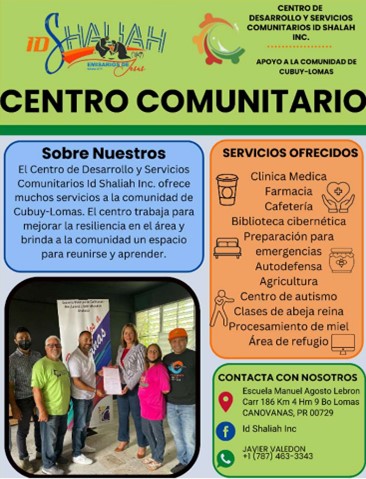
While some people have been led to believe they can prep for disasters by building their own bunkers and stashing away supplies, this approach suggests a private and individualized mode of family recovery while doing nothing to address the wider social needs of our societal infrastructure. In contrast to the private bunker mentality, we have found that many communities facing climate disasters have instead turned to the creation of community resilience hubs, people’s assemblies like Casa Pueblo, and practices of “autogestion” (self-management) like those seen in Puerto Rico (see, e.g., Bonilla and Lebron 2019; Garcia López 2020). Community-run resilience hubs and people’s assemblies support the collective needs of the entire surrounding community not only by providing shelter, water, food, shade, and/or power, but also by building social solidarity, participation, mental health, and trust in each other.
Researchers and students can support this kind of social infrastructure through participatory action research and project-based learning, like that carried out by our research consortia, and even by students working on projects that support community organizations (e.g. see projects at the WPI Puerto Rico Project Center). Indeed, such collaborations can be integrated into the way a wide range of disciplinary material is taught (Montalto 2023). In the field of Caribbean Studies, “opening spaces for student-led enquiry on critical human challenges” can become a crucial mode of “experimental teaching-practice” that builds “confidence, sense of responsibility, and imaginative problem solving” in the face of the complex social challenges of addressing a changing climate (Heron and Esprit 2025).
Collaboration around solutions to one problem often creates the empathy and camaraderie needed to solve others. In the Hunting Park neighborhood of Philadelphia, our community-based partner, Esperanza, reported that it was able to interest more residents in its health and tree planting programs on blocks where we installed shade structures to mitigate heat risks. The public shade structures also became opportunities for residents to interact and discuss other needs of their community. By training residents in carpentry skills and employing them to build >500 shade structures, the project was also an economic stimulus strategy at a critical time in the COVID-19 pandemic. We suggest that this kind of strengthening of social infrastructure is crucial to advancing climate adaptation and resilience, as well as a broader list of urban sustainability goals. When students are embedded in this work, not only are they inspired, but they develop the collaborative skills that are essential to scaling this work up and out.
Manual override
Another lesson taken from engineering for failure is the need for manual override when technological systems fail. In terms of social infrastructure, this suggests the need to have backup ways of doing things if expert systems falter or normal social systems fail. For example, if we are used to provisioning food by shopping at a supermarket, it may be prudent to maintain local knowledge of how to forage, grow, and prepare food from our local ‘foodshed’ in case the highly technical, refrigerated, and mobile long-distance food system is disrupted. Local food production, on urban rooftops and in urban gardens, can also reduce food miles which make up 19% of greenhouse gas emissions associated with the global food system (Li et al 2022). Resilient social infrastructure systems sustain local farmers, growers, hunters, fishers, and foragers who can step in for a kind of manual override now, during acute failures of the high-tech global food system. As importantly, these same individuals house the knowledge needed to enact the long-term transformation of food provisioning that we desperately need.

In many marginalized communities of the northeast US, physical infrastructure systems may be plagued with deferred maintenance (e.g. clogged storm sewers in Camden, New Jersey USA) or may be lacking altogether (e.g. a strategy for fluvial flood protection for the Eastwick neighborhood of Philadelphia). While not an excuse for governments to continue this pattern, social infrastructure can help to fill in these infrastructure service gaps – again with collateral resilience co-benefits.
In Eastwick, neighbors call each other when there is heavy rain to remind each other to move their cars. In Camden, children leave early for school on rainy days, since they know that flooding can disrupt bus routes. In West Philadelphia (and many other neighborhoods across the northeast), urban agriculture practices help to increase the availability of fresh produce in urban food deserts. The same plots of land can be designed to absorb stormwater and reduce the intensity of the urban heat island, critical strategies for climate change adaptation. Researchers can help involve neighbors in supporting these strategies. For example, an app (e.g. Cleanlet) developed by our group is being used to get residents to remove debris from storm drain inlets in advance of forecasted rain, with research documenting its value in neighborhood flood risk mitigation ongoing.
When acute climate hazards occur, investments in social infrastructure can promote resilience. In the aftermath of hurricanes Irma, Maria, and Fiona, organizations like La Colmena Cimarrona in Vieques, Puerto Rico have turned to local small-scale farming, beekeeping, seed-saving, and other traditional foodways to preserve social resilience. Advocates of agroecology build on traditional skills but reinvent them for a climate-resilient future. Development of such strategies requires cultural knowledge of things like hand tools, basket-making, plant propagation, seed storage, and so on. It also extends to knowledge of food preservation and storage techniques, which helps explain the popular trend for practices such as canning and jarring fruits and vegetables, smoking fish and meat, and fermenting and pickling. Such practices are social infrastructure strategies for preparing for acute disruptions that simultaneously create the momentum and skills needed for long-term societal transformation.
If a flood or landslide obstructs emergency routes, causing residents to lose access to hospitals and doctors, “old-fashioned” homeopathic practices may play a critical role. Communities across the Caribbean, for example, still have people knowledgeable in plant medicines such as “bush teas” or plant salves that can be used as substitutes for pharmaceuticals with proper training in their use. There is also a need for community midwives who can help people give birth at home. Maintaining these traditional practices and indigenous knowledge of local plants such as manioc/yuca is a crucial social infrastructure for “manual override” in the face of climate disruption of technical systems, not only because it can resist pests, outride hurricanes, and be stored without electricity, but also because it carries significant cultural, spiritual and community values.
Packets and Patches
Early arguments for green infrastructure (e.g. Bennet 1998) emphasized the importance of both patches and links. The green spaces themselves ― the patches ― provide layered services locally, but it is the corridors that connect them to other patches and distribute the social and ecological functions they provide to an entire community (Zhang et al 2019). Similar examples exist in other fields. Information systems are designed to break information into smaller “packets” that can travel along multiple channels before being resynthesized again when they are reunited. Broken communication networks include links that can connect disconnected zones if individual landlines or cables go down. Can social infrastructure be designed to function in a similar way?
We argue that to build resilience, social infrastructure must include both patches and links. One way to think about this would be to consider what happens when news and information networks go down, in contexts where communication is crucial to knowing what actions to take, as often happens during climate-related disruptions such as hurricanes and wildfires. In these cases, word-of-mouth can be used to patch back together the communication infrastructure. Word-of-mouth is not simply person-to-person but rather is usually channeled through community “mavens” ― those well-connected “knowledge brokers” who know everybody and everything (Feagan et al. 2025). Mavens can be hubs of incoming and outgoing information, gathering various packets of information, connecting asset maps across localities, and patching back up the social infrastructure of communication when, e.g., the energy grid falters. Mavens create redundancy in communication and are thus essential social infrastructure agents. The best way for students to appreciate the value of mavens is to interact with them during their education.
Links are often created manually to compensate for deficiencies in built infrastructure systems. They create alternative ways of accomplishing similar goals, with the flooding app described above as a prime example. A patchwork of community-based resilience hubs can also serve this function by maintaining contact across their own local networks and between regional networks. In Puerto Rico, many communities took over abandoned public schools and turned them into vibrant hubs of social organizing. Such hubs can become a kind of infrastructure for maintaining the social infrastructure by rebuilding linkages from the local ground up, and from one community hub to another. This is how donations, volunteers, and information often get distributed locally after climate disasters.
Indeed, when a disaster strikes, top-down recovery efforts implemented by governments often rely on these bottom-up community efforts channeled through meso-level organizations to reach “the last mile” as it were (Saum-Manning 2021). There is a kind of powerful capillary action at work in communities with robust social infrastructure through which resources, knowledge, and assistance, can be distributed before, during, and after a stressor. In our heat risk reduction work in Philadelphia, the researchers could never have identified households that were most heat-vulnerable and who would benefit the most from our sidewalk-scale shade structures if it had not been for the critical input of our funded block captains.
Supporting this kind of co-production of knowledge draws on participatory action research, mobilizes civic science, and can be embedded in problem-based learning where students assist in applied research ― as both of our research teams from San Juan to Philadelphia (Kavathekar et al. 2024). In our work with the Foundation for Puerto Rico, for example, we are supporting local entities who work with community groups in towns and municipalities across the island to assess their own local conditions and design local emergency plans. Strengthening this kind of locally embedded social infrastructure is about linking together the resilient patchwork of collaborative relationships.
Conclusion
We have purposefully drawn on empirical examples of social infrastructure supporting resilience in communities on the frontlines of the climate crisis because we want to show that this is not just a theoretical exercise: it is already happening.
Social infrastructure will continue to function with or without federal funding and policy. Indeed, it is the way countless marginalized communities have combatted oppression for centuries. Higher education can help to sustain social infrastructure through this challenging period by directing our research, classwork, student projects, and collaborations towards the development of solutions to real-world problems (Montalto 2023). We can build trust by co-producing knowledge with communities (Feagan et al. 2025), while using multiple methods to bring people together and reach the most marginalized (Saum-Manning 2021).
For this reason, we believe that there is good reason not to lose hope, even as we demand that our federal government reconsider its decision to leave our communities without centralized support and resources. Just as we can learn from the failure of physical infrastructural systems, we are also learning from the failure of social infrastructural systems that there are many workarounds and ways to support their strengthening and resilience. This might also help to make the case for funding social infrastructure, not just as a nice to have extra, but as a crucial first step in enabling the transformation that is necessary if our life systems are to continue as we face a changing climate.
Franco Montalto and Mimi Sheller
Philadelphia and Venice, Worcester
References
Bennett, A.F. (1998, 2003). Linkages in the Landscape: The Role of Corridors and Connectivity in Wildlife Conservation. IUCN, Gland, Switzerland and Cambridge, UK xiv + 254 pp
Bonilla, Y. and Lebron, M. (eds) (2019). Aftershocks of Disaster: Puerto Rico Before and After the Storm (New York: Haymarket Books).
Bruyere, C.L., Tye, M.R., Holland, G.J., Done, J. (2015) Graceful Failure, Engineering, and Planning for Extremes: The Engineering for Climate Extremes Partnership (ECEP), American Geophysical Union, Fall Meeting 2015, abstract id PA42A-04
Chandler, D. (2014). Resilience: The Governance of Complexity (Abingdon: Routledge).
Chandler, David, Grove, Kevin, and Wakefield, Stephanie (eds) (2020) Resilience in the Anthropocene: Governance and Politics at the End of the World (Abingdon: Routledge).
Dodman, D., B. Hayward, M. Pelling, V. Castan Broto, W. Chow, E. Chu, R. Dawson, L. Khirfan, T. McPhearson, A. Prakash, Y. Zheng, and G. Ziervogel, 2022: Cities, Settlements and Key Infrastructure. In: Climate Change 2022: Impacts, Adaptation and Vulnerability. Contribution of Working Group II to the Sixth Assessment Report of the Intergovernmental Panel on Climate Change [H.-O. Pörtner, D.C. Roberts, M. Tignor, E.S. Poloczanska, K. Mintenbeck, A. Alegría, M. Craig, S. Langsdorf, S. Löschke, V. Möller, A. Okem, B. Rama (eds.)]. Cambridge University Press, Cambridge, UK and New York, NY, USA, pp. 907–1040, doi:10.1017/9781009325844.008.
Feagan, M., Muñoz-Erickson, T., Hobbins, R. et al. (2025) “Co-producing new knowledge systems for resilient and just coastal cities: A socio-ecological-technological systems framework for data visualization”, Cities, 156: 105513.
Garcia López, G.A. (2020). “Environmental justice movements in Puerto Rico: Life-and-death struggles and decolonization horizons”, Society and Space Forum, February 2020, accessed at https://www.societyandspace.org/articles/environmental-justice-movements-in-puerto-rico-life-and-death-struggles-and-decolonizing-horizons.
Hampton, S., & Whitmarsh, L. (2023). Choices for climate action: A review of the multiple roles individuals play. One Earth, 6(9), 1157-1172. https://doi.org/10.1016/j.oneear.2023.08.006
Heron, A. P. and Esprit, S. (2025) “Pedagogies of Survival: Research, Disaster and Repair in Dominica”, pp. 61-74 in The Routledge Handbook of Caribbean Studies, eds. P. Noxolo, K. Rhiney, and R. Cummings (London and New York: Routledge).
Kavathekar, A., Tangtrakul, K., Pearl, N., Britton, J., Chapman, S., Graff, R., et al. (2024). A First step in the Co‐production of a climate resilience research Agenda for the Philadelphia region. Community Science, 3, e2023CSJ000071. https://doi.org/10.1029/2023CSJ000071
Li, M., Jia, N., Lenzen, M. et al. Global food-miles account for nearly 20% of total food-systems emissions. Nat Food 3, 445–453 (2022). https://doi.org/10.1038/s43016-022-00531-w
Montalto, FA. (2023) How Tackling Real-World Problems Transformed by Teaching and Research. Nature. 621, 659 doi: https://doi.org/10.1038/d41586-023-02989-5.
Petroski, H. (1992) To Engineer Is Human: The Role of Failure in Successful Design (New York: Vintage).
Petroski, H. (2012) To Forgive Design: Understanding Failure (Cambridge: Harvard University Press).
Saum-Manning, L. (2021) Best Practices and Lessons Learned from Community Engagement and Data Collection Strategies in Post-Hurricane Maria Puerto Rico. Homeland Security Emergency Management 18 (3): 225-50. https://doi.org/10.1515/jhsem-2020-0075
Sheller, M. (2021) Advanced Introduction to Mobilities. London: Edward Elgar Publishers.
Sheller, M. (2018) Mobility Justice: The Politics of Movement in an Age of Extremes. London and New York: Verso.
Zhang, Z; Meerow, S; Newell, JP and M Lindquist (2019) Enhancing landscape connectivity through multifunctional green infrastructure corridor modeling and design. Urban Forestry & Urban Greening, Volume 38, https://doi.org/10.1016/j.ufug.2018.10.014.
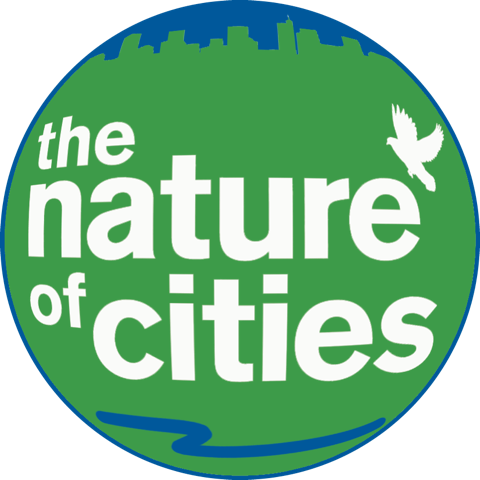
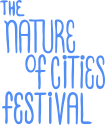
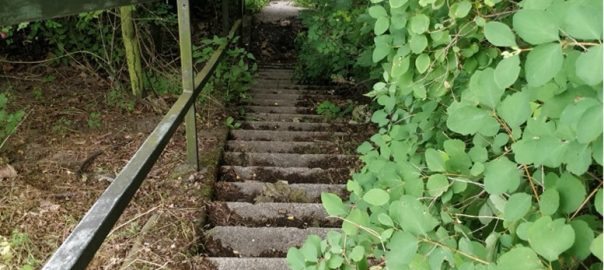
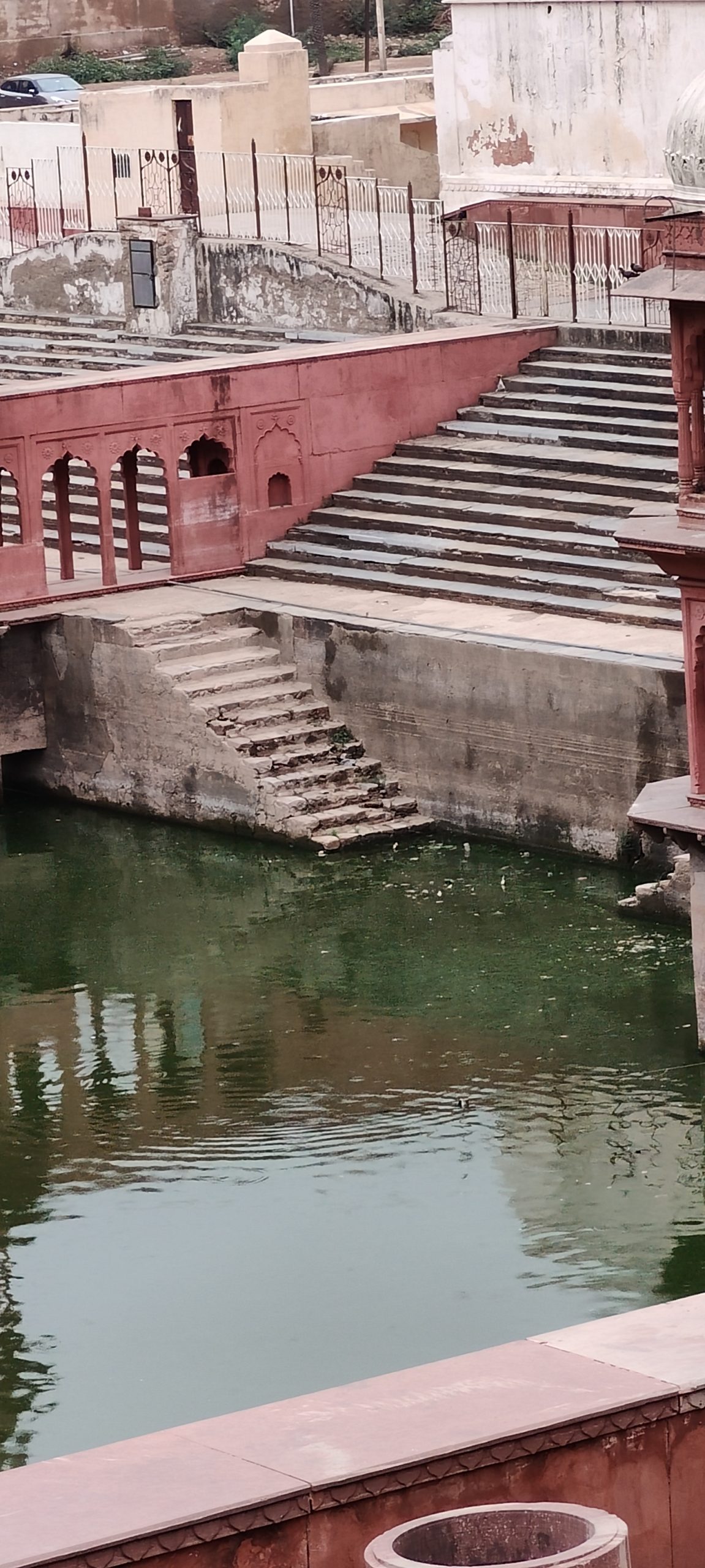

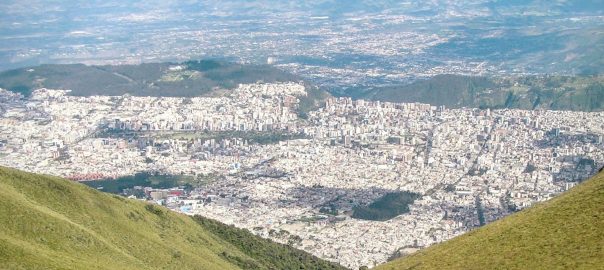
Leave a Reply